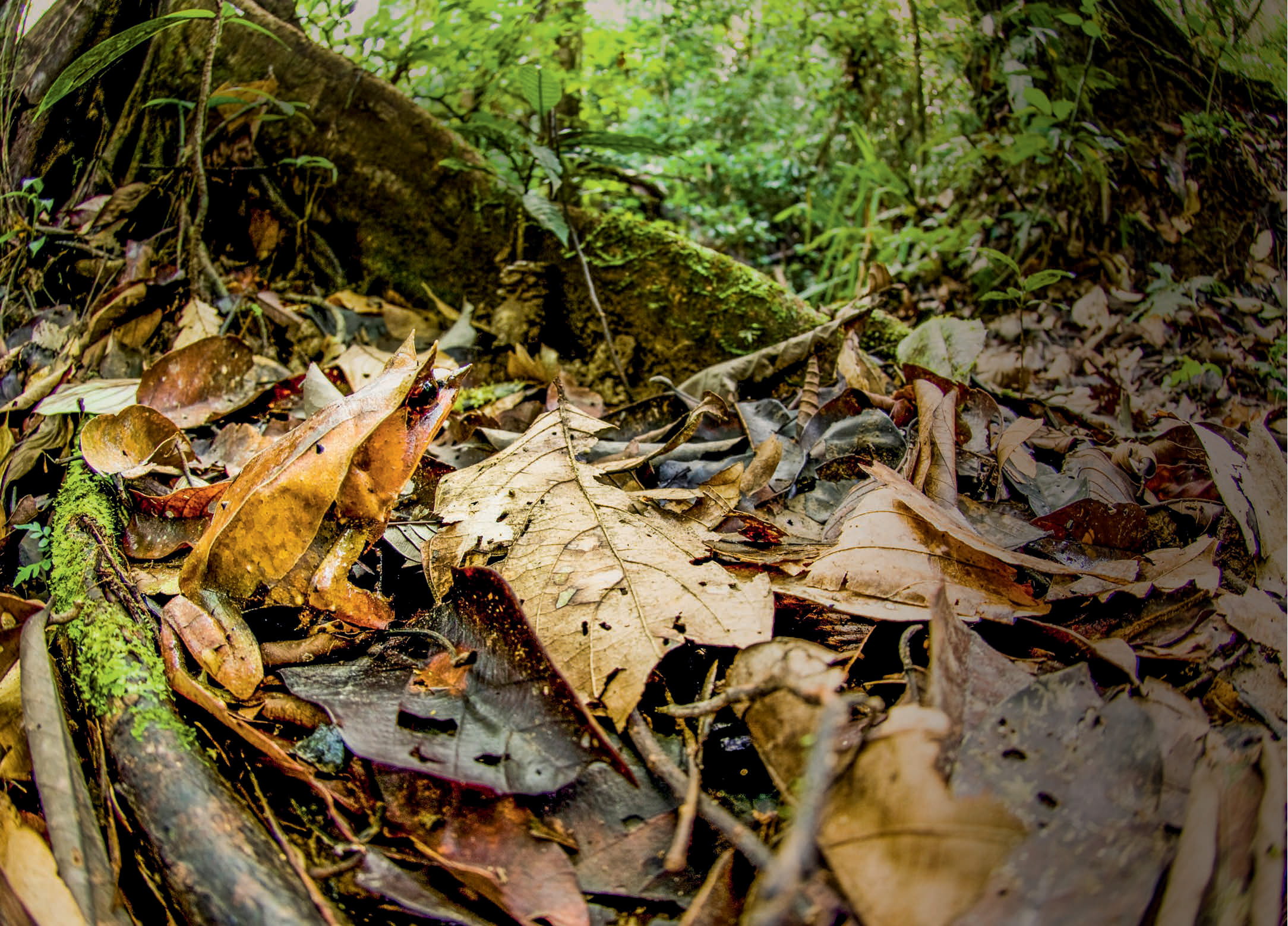Stories > Living Treasure
Living Treasure
Indigenous to Singapore, this rarely seen forest dweller so closely mimics leaf litter that unless it moves, even an experienced amphibian spotter is unlikely to see it.
PHOTOS GETTY IMAGES

unny Singapore is known as a modern metropolis, a city in a garden, but not many of its residents are aware that there is a small but thriving ecosystem of interesting native plant and animal species living among them. Even fewer are conscious of the fact that many of these species are vulnerable, threatened, or endangered.
One such creature is the Malayan Horned Frog or Megophrys nasuta. It is the only horned frog species found in Singapore – our other frog species are smoother and sleeker – and its existence here is currently limited to the Central Catchment Nature Reserve and Bukit Timah Nature Reserve. If you are walking around there at dusk or before rainfall, it is possible to hear its distinctive call, a metallic honk. The frog spends most of its life among fallen leaves close to the banks of small freshwater streams deep within mature and swamp forests. With its large, squat body – it can reach about 16cm in length – pointed snout, horn-like eye ridges, and mottled brown colouring, it blends perfectly into the forest leaf litter. This makes it an effective predator of smaller animals such as scorpions, freshwater crabs, spiders, lizards, young rodents, and even other frogs.
Unfortunately, the National Parks Board (Nparks) has raised concerns about continued habitat loss, and the frog’s popularity as an exotic pet has also led to diminishing numbers in the wild. Nparks states on its website that breeding programmes may ease the pressure on wild populations, but it is currently unknown if any individuals or organisations have undertaken such a project.
Public awareness of the challenges faced by our native species, such as poaching for the pet trade, is needed to inspire community efforts to maintain our natural biodiversity for the future. It is clear that scientists and the Government cannot achieve this on their own. Perhaps, after reading this, our readers will be inspired to take action to help protect this vulnerable endemic species.
